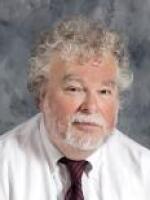For decades, golfers using the Audubon golf course in Amherst have been walking across bodies quietly buried by the University at Buffalo on what was once university property. That is going to change, with the property turned into a cemetery for crematory ashes.
Over the decades, around 11,000 people who were residents of the old Erie County Poorhouse died. Some bodies were returned to their families. The rest were buried.
That property at Main Street and Bailey Avenue is now UB's South Campus and over the years since it became the university, bodies have been exhumed. In the 1960s, many bodies were dug up and trucked to UB land in Amherst.
That land is now the golf course, which Town Supervisor Brian Kulpa said will soon be closed in its present form. Kulpa said the bodies won't be dug up yet again and moved, but will be remembered.
"Commemorate those individuals and celebrate their final resting place, which happens to be here in Amherst," Kulpa said. "We want to do a good job of that. We want to demarcate who is there, maybe not the specifics yet, but largely the population gives somebody a sense of who may be interred there."
Kulpa said the town is going through the legal hurdles to have Albany allow parkland to be transferred to Forest Lawn Cemetery Group, which will build a memory gardens for remains of those who have been cremated. The plan won't include buildings and structures, just landscaping: walkways, trees and lawns and places for the ashes of the dead and the urns for the ashes of others.
"We know there are remains of the least among us, the almshouse, the people who were the poorest of the poor, the people who were helped, incarcerated, brought there for various reasons and ultimately expired and they've been discovered for decades and they've been moved," said Forest Lawn President Joseph Dispenza. "We also know that there are many, many, many more there, still on Michael Road."
How soon, what it will cost and what this will do to the design process for the planned Amherst Central Park are now being worked out. Orchard Park cemetery design firm Grever & Ward is designing the memory gardens.
Eric Keyes, landscape architect and vice president of Grever & Ward, said it will be different from a cemetery.
"Ingenious way of memorializing a loved one amongst the flora and fauna of a garden setting, not a typical row upon row sea of monuments. This is meant to be more interactive, more experiential, I guess you might say," Keyes said. "So it's meant to be more interactive than a typical cemetery setting."
The golf course will be either closed or cut back, perhaps to nine holes.






